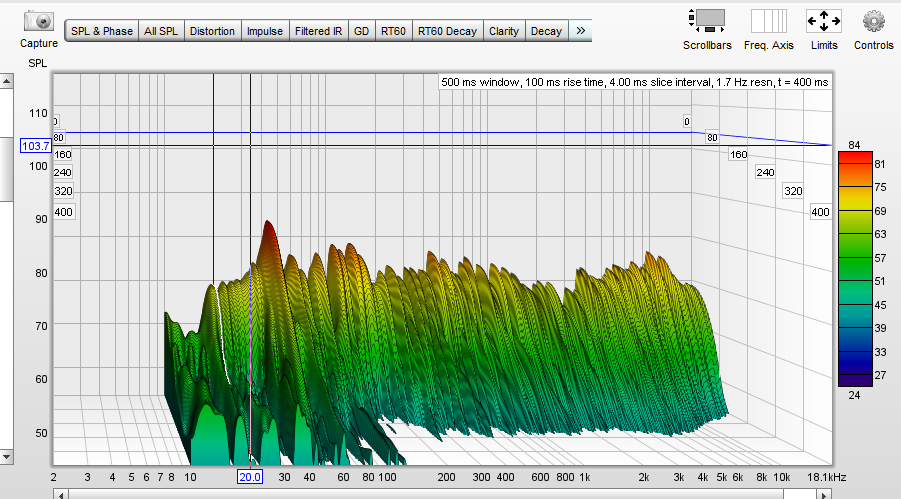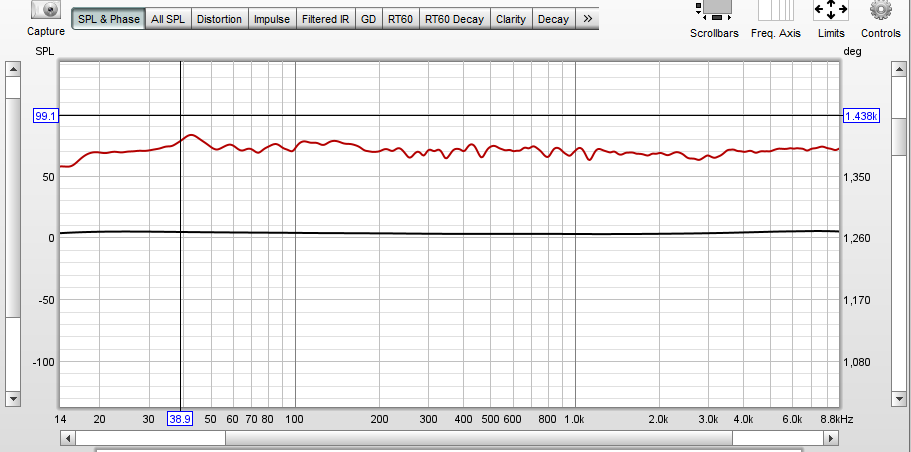Thanks for the chat.
Kind regards,
BP
Shouldn't This Sound Boomy?
I have recently purchased a mic and I’m running REW to test my room response. These are the resulting charts:


I hear nice tight bass when I play music. I hear a big improvement over my previous speakers. The mid range and treble sound great and again the bass sounds articulate and tight. I would think this would be boomy and muddled. Unfortunately, I did not have the ability to test my previous speakers. The room is treated with GIK panels, but I have no bass traps in the corners due to the spouse approval factor. Am I a horrible listener that can’t hear this, or am I missing something else?
In response to:
IMHO, most live performances, especially in rock, electronica and related genres, do not deploy sound engineers that present a realistic sound balance these days. Bass is overweight, often not tight, and consequently the overall sound is poor, sometimes atrocious. General audiences seem to like the "thump in your chest" bass sound/feeling. However, for home listening it can be very tiresome and disappointing after the initial wow moment has passed. Thank you, BP
|
Thank you for the further information, in which you introduce how you tune a system from a measurement perspective. I tune my system and everything that influences the sound that I have control of, from a listening experience perspective. You and I approach the subject using different methods and, if it works for either, both (all) of us, then who is to say which method is right or wrong, or more right / more wrong? But, we should be careful when advising forum posters what to do. Our advice may not be appropriate for their needs. At best, we can only generalise. I have spent almost 50 years getting my audio replay to sound in a way that I believe delivers a palpable, entertaining sound, with presence. I have found that measuring the audible spectrum, cannot help me with the all important spatial information, nor can it help with the individual listener's perception of sound. I have also found that there is an inextricable trade off between dynamics and musicality. The best we can hope for here is a compromise. These subjectives are some of the issues that make our hobby such fun, can result in frustration, and do help to keep the hifi industry alive. This, or any other forum, is unable to allow us to debate the subject without introducing misunderstanding of each other's thinking via. the narrative. So, I respect your opinion and, I trust you will understand mine. More of my thoughts can be found (if you can obtain a copy) in HIFI Critic Vol 12 / No1 on p42-44 in an article called Tuned To Perception. Perhaps you will find it interesting? Kind regards, BP |
But you did just that...
Go figure. |
@johnlnyc I'll second that, thank you! I would also add that our hearing perception does get in the way from time to time and, to keep music sounding fresh, we need new sounds, presented in new ways, to challenge us. This can be new music programme, an audio sabbatical, some changes to our system set up, or a multitude of other things, including personal wellbeing. As an example, I sometimes by-pass my pre amp and plug the XLR output of my DAC directly into my power amp. Providing DAC's have a very good volume control, this works well and only takes a couple of minutes to execute. The sound then becomes a little more "clinical" with slightly more dynamics, but the trade-off is a small loss in musical engagement. However, the "new" sound gets my attention. After a couple of days (maybe 4-6 hours of listening time) switching back to including the pre amp in my system, immediately delivers a more entertaining sound and my hearing perception is refreshed again. Even wetting my industrial scale grounding mat does the trick, sometimes. It is an advantage to all music lovers, to understand the perception of hearing and to consider that maybe our system is not a fault, but we may have become a little complacent with the sound and presentation it is producing. Only this morning did I have a wonderfully emotional listening experience, playing some music that I had not heard for maybe a year of more. I was astonished by how engaging and entertaining that 2 hour listening session was and, how different music production styles affected my enjoyment of the music to some degree. Kind regards, BP |
Yes, that begins to highlight the issues. I also had an article published in HiFi Critic Vol 12 No1 (pages 42-44) in 2018, where I started to scratch the surface of my layman's understanding of hearing perception and how it affected my ability to enjoy music reproduced through my system. Sorry that the article is copyrighted and cannot be publicly shared, but I have added a link, if anyone is minded to purchase. https://www.hificritic.com/store/p137/hificritic-vol12-no-1.html Maybe someone has a copy they can share with anyone interested?
|